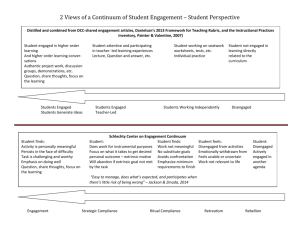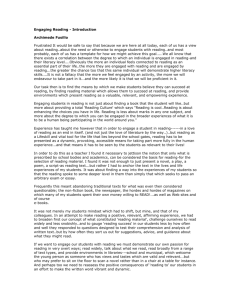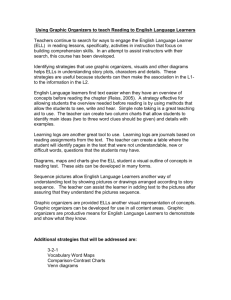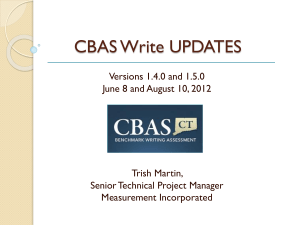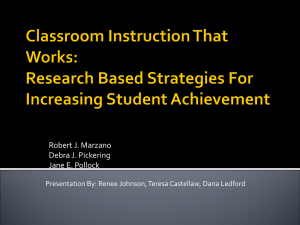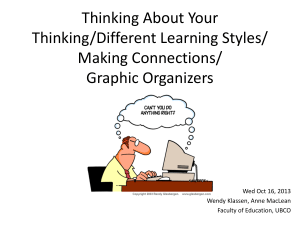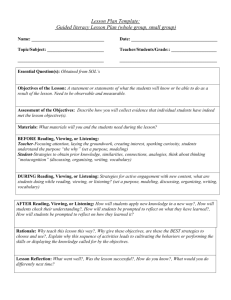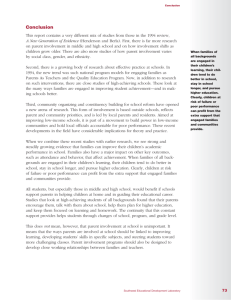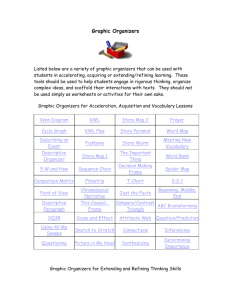Engaging Students in Learning PowerPoint Presentation
advertisement
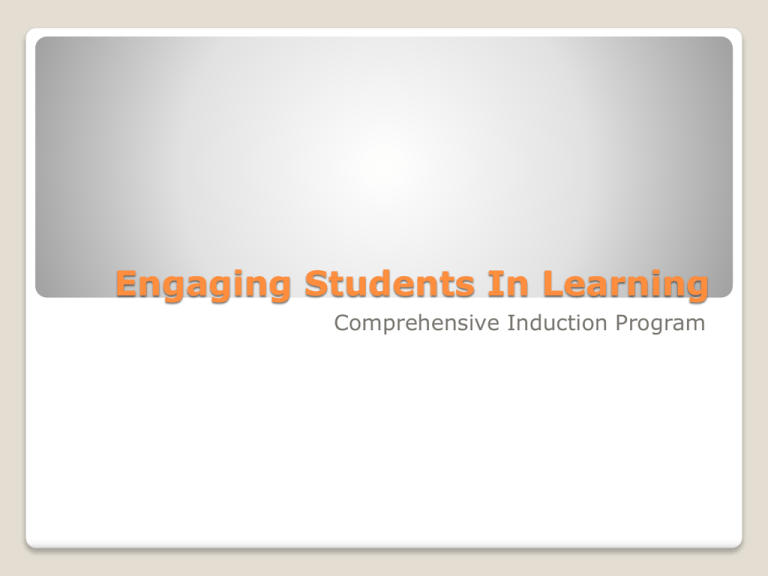
Engaging Students In Learning Comprehensive Induction Program Delaware Performance Appraisal System II Activities and Assignments Grouping of Students Instructional Materials and Resources Structure and Pacing of the Lesson Component 3- Criterion 3a What Is Student Engagement Student Engagement minutes—think of a time (as teacher, learner or observer) when you experienced high levels of student engagement. Alone: Three Group: Share Brainstorm a your experience. list on chart paper: What does student engagement look like? Activity Attentive Committed Engaged Connected Persistent “Students who are engaged are involved, but not all students who are involved are engaged.”- Philip Schlechty Student Engagement Defined 1.Engagement - (High Attention and Commitment to the tasks at hand) 2.Strategic Compliance - (High Attention and Low Commitment the tasks at hand) 3.Ritual Compliance - (Low Attention and Low Commitment to the tasks at hand) 4.Retreatism - (No Attention and No Commitment) 5.Rebellion - (Diverted Attention) 5 Student Responses to Work Engaged Strategically Compliant Ritually Compliant Retreatist Rebel Create Create Create Learn Little Learn Little Evaluate Evaluate Evaluate Negative Attitudes Negative Attitudes Analyze Analyze Analyze Disengages/ Disrupts Disrupts Apply Apply Apply Understand Understand Understand Remember Recall/ Remember Recall-Short Term Typical Student Activities Delivering Engaging Instruction Student Engagement Make the students the center of your classroom. Smile at your students. Greet your students when they walk into the classroom. Overlook what you can. Establish procedures and routines early. Laugh at yourself. Eliminate personal habits that may annoy kids. Use multiple modes of learning. Talk less than your students. Improving Your Charisma Don’t Do Talk more than your students. Design activities that encourage your students to speak with each other. Create lessons that allow your students to be passive. Skip the worksheets and ask students to solve puzzles, debate points, engage in other open-ended thinking activities. Let the push for accountability cause you to neglect those “teachable moments”. Turn any occasion into a learning event in your classroom. Allow yourself to drift when it comes to finding the correct pace for delivery of instruction. Plan alternate lessons in case the pace you initially set for a lesson needs adjustment. Allow your students to sit around with nothing to do while they wait for class to begin or end. Plan more work than you think your students will be able to accomplish. Confuse your students by giving hurried or unclear directions. Deliver a combination of written and verbal directions and check for student understanding. Avoid Common Pitfalls USE YOUR VOICE EFFECTIVELY VIDEOTAPE YOURSELF SET THE STAGE MASTER THE ART OF PAUSE KNOW YOUR AUDIENCE LEARN TO MAINTAIN EYE CONTACT COMMAND ATTENTION USE BODY LANGUAGE TO MOIVATE YOUR LISTENERS Improve Your Oral Presentations Help Students Make a Personal Connection to the Lesson •Include names, interests, hobbies and cultures of your students when creating your lessons. Present a Slideshow •Have students create their own PPT slide summarizing the key points of your lesson. Invite Guest Speakers Into Your Class •Having students hear from members of the professional community who have a connection to the topic can reinforce points you are trying to make. Use a Variety of Media •Try using newspapers, cartoons, music, magazines, etc. when trying to demonstrate how you want something done. Display a Statement on the Board •Immediately play a video that supports the statement. Surprise the Students With Theater •Use theater techniques to stage a reenactment. Wear a costume (or have students wear costumes) to re-emphasize a point. Make a Point Students Remember Engage Students During Lectures Before During • Post procedures in a prominent place • Enforce the procedures • Determine the purpose of the discussion • Introduce the discussion topic • • Create the questions your students will discuss • • Arrange the room Explain the importance of supporting their opinions Encourage deeper thinking and risk taking • Recognize speakers • Get out of the way After • Have students reflect (written or oral) • What went well • Suggestions for improvement • Retelling of the important points • Written summary Engage Students in Discussions Engage Students With Games Concept Maps Description Maps Graphic Organizers Time Sequence Maps Cause-and-Effect Maps Engage Students With Graphic Organizers 1. Cultivate your communication skills and charisma 2. Fully plan and prepare for oral presentations 3. Pay attention to all aspects of delivery (voice, demeanor, and body language) 4. Plan ways to encourage students to stay on track and on task 5. Take advantage of the power of play 6. Use graphic organizers 7. Use hands-on manipulatives to enliven lessons 8. Provide examples of what you expect of students 9. Even mundane seatwork can be made more appealing and creative with careful planning Student Engagement Strategies Summarized Schlechty, Phillip C. Engaging Students: The Next Level of Working On The Work. First ed. San Francisco: JosseyBass, 2011. Print. Thompson, Julia G. The First-Year Teacher's Survival Guide. Third ed. San Francisco: Jossey-Bass, 2013. Print. Sources

